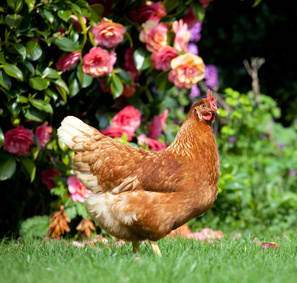Do you know the difference between “Certified Organic” and “All Natural?”… or what qualifies as a “free range” chicken?
Many people don’t – so we’ve put together the following quiz to help you better understand what you’re picking up at your local grocery store.
Simply match the following terms with the correct statement below:
 a. all natural
a. all natural
b. certified organic
c. fair trade
d. free range
e. gluten-free
f. genetically modified organism/gmo
g. heirloom vegetables
h. high fructose corn syrup
i. homegrown
j. organic food
k. organic meat, poultry, eggs, dairy
l. preservative
m. preservative free
n. sustainable
1. A movement which strives for fair treatment for farmers, who in other situations might be more susceptible to the will of the purchaser, will negotiate with the purchasers in order to receive a fair price for their products, also aim to pay their workers a fair price, and engage in environmentally-friendly practices.
2. Conserving an ecological balance by avoiding depletion of natural resources, capable of being continued with minimal long-term effect on the environment.
3. A government-approved certifier inspects the farm where the food is grown to make sure the farmer is following all the rules necessary to meet USDA standards.
4. Old, open-pollinated, and mostly non-hybrid, generally considered to be a variety that has been passed down through several generations of a family.
5. A chemical added to foods to inhibit decomposition or spoilage.
6. A sweetener created by repeatedly processing corn starch into a syrup, can be found in processed foods from salad dressings to soft drinks.
7. A diet that excludes the protein, gluten, found in grains such as wheat, barley, and rye.
8. Produced by farmers who emphasize the use of renewable resources and the conservation of soil and water to enhance environmental quality for future generations, without using most conventional pesticides or fertilizers made with synthetic ingredients.
 9. Grown at home or in a particular local area for local consumption.
9. Grown at home or in a particular local area for local consumption.
10. Foods or food items that have had their DNA changed through genetic engineering.
11. Widely used term in food labeling and marketing, however, there’s no official definition by the US Food and Drug Administration.
12. Comes from animals that are given no antibiotics or growth hormones, and are fed organic feed/forage.
13. A natural, additive-free and healthier form of food or other consumables.
14. Permitted to graze or forage for grain, etc., rather than being confined to a feedlot or a small enclosure.
Scroll Down for Answers…..
.
ANSWERS:
1. c 6. h 10. f
2. n 7. e 11. a
3. b 8. j 12. k
4. g 9. i 13. m
5. l 14. d